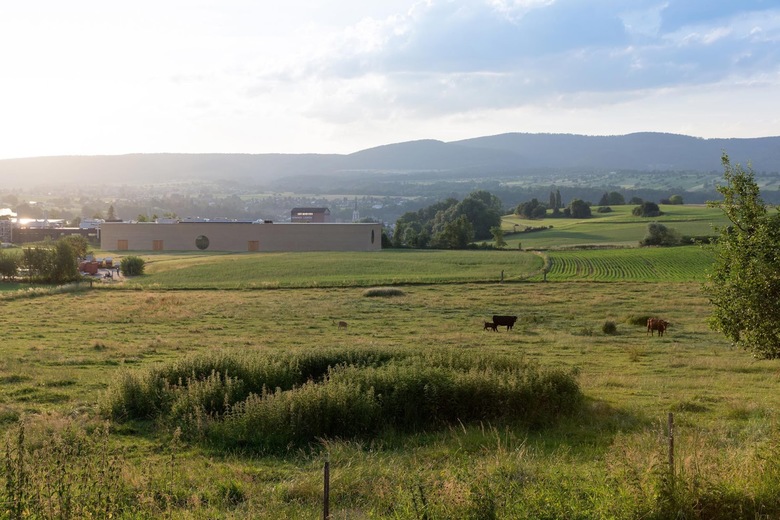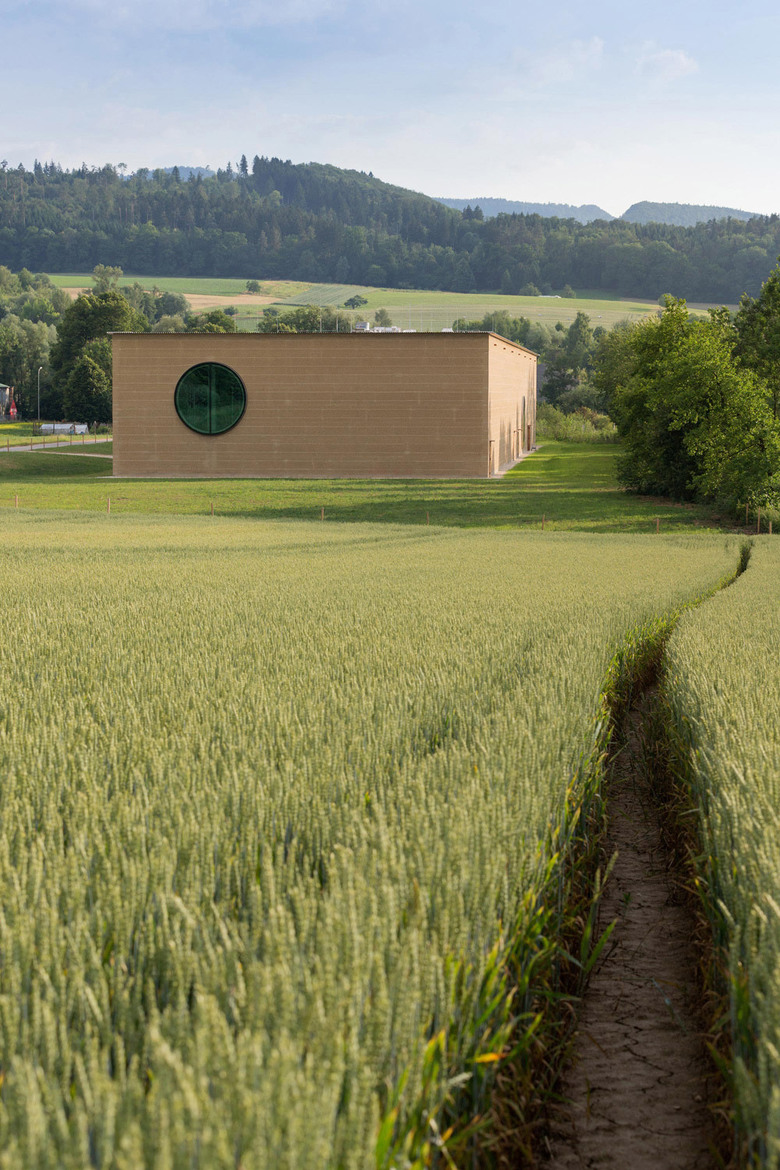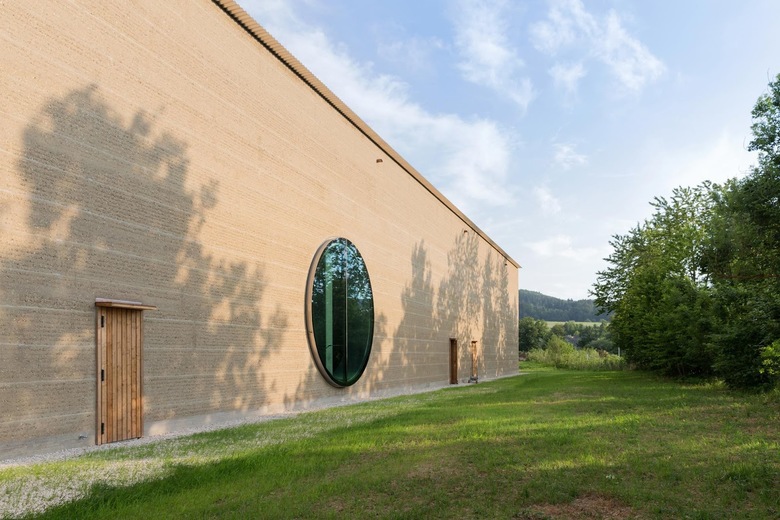Ricola Opens Herb Center
John Hill
7. July 2014
Photo: Courtesy of Ricola
Herzog & de Meuron's seventh project for the Swiss manufacturer of herb drops has been completed in Laufen. Notably, the building is considered the largest loam building in Europe.
The rammed earth building was built primarily from locally sourced earth, "like a geometrical segment of landscape," and "like an erratic block in the midst of a landscape dotted with conventional industrial buildings," according to the architects. The building is long and rectangular, "reflect[ing] the steps involved in the industrial processing of herbs, from drying and cutting to blending and storing," again according to Herzog & de Meuron.
Photo: Courtesy of Ricola
Like most Herzog & de Meuron projects, their many projects for Ricola hardly replicate each other: The Ricola Storage Building of 1987, also in Laufen, is covered in shingled fiber cement panels that decrease in size as they move up the facade; and the Production and Storage Building in Mulhouse-Brunstatt, France from five years later, on the other hand, is like a box with open flaps where walls and canopies are covered in translucent polycarbonate panels printed with a Karl Blossfeldt plant photograph. Their newest building for Ricola ventures back to a more "primitive" construction while similarly exploring how to articulate a predominantly solid production space.
Using loam and earth from a radius of 8-to-10 kilometers in the Laufen Valley, the precast panels were manufactured in a nearby factory by Lehm Ton Erde Baukunst GmbH (the company of Martin Rauch that translates to "Loam Clay Earth"). Accordingly, "the building is made out of the heritage on which it stands," per a statement from Ricola.



